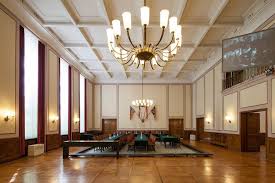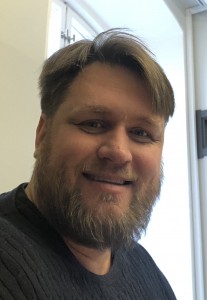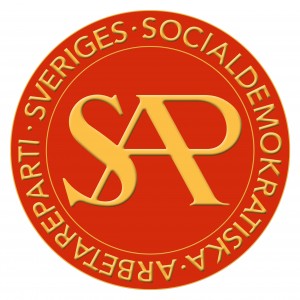75 år sedan Nazityskland besegrades
I dag den 9 maj är det 75 år sedan nazitysklands kapitulation. I USA och i västeuropa firas den 8 maj medan i fd Sovjetunionen firas den 9 maj. Anledningen är skillnaden i tidszon som gjorde att det hunnit bli den 9 maj i Moskva när kapitulationen trädde i kraft.
Andra världskriget är en av de absolut största händelserna i världshistorien. Mellan 70-85 miljoner döda. Aldrig tidigare har så många av världens nationer varit involverade i ett så förödande krig. Det totala kriget, utfört på industriell väg, riktades inte bara mot militära mål utan även länders civilbefolkning.
I Europa vaknade världen i maj 1945 upp från den nazistiska mardrömmen. I Polen dog nära 17% av befolkningen i kriget. I Vitryssland är samma siffra 25%. Över hela kontinenten låg land efter land i ruiner. Miljon efter miljon av människor på flykt utan någonstans att ta vägen.
Det är svårt att förstå 75 år senare den brutalitet som nationalsocialismen hade kastat in i Europa i. I bland hör man jämförelser med nazismen när förbrytelser diskuteras men få verkar förstå nazismens brutalitet. Kriget var långt ifrån de filmer som Hollywood lanserat.
Mathias Schenk var en ung belgare som beordrats att strida med SS-brigaden Dirlewanger mot polackerna under Warsawaupproret 1944. Efter kriget delade han med sig av sina upplevelser och berättade om nazisternas agerande mit polackerna. Han skriver:
“Sometimes in the movies, there are scenes from the Uprising, but there is nothing that I’ve seen. I haven’t told that to anybody yet with such great detail. You ask about everything. It’s your right, but everything is coming to life again. Back then we had no idea that those killed will never die, that they will always be with us. Everything happened so quickly. Shouting, shooting. Singular faces. All this is stuck in my memory very strongly.”
”We blew up the doors, I think of a school. Children were standing in the hall and on the stairs. Lots of children. All with their small hands up. We looked at them for a few moments until Dirlewanger ran in. He ordered to kill them all. They shot them and then they were walking over their bodies and breaking their little heads with butt ends. Blood streamed down the stairs. There is a memorial plaque in that place stating that 350 children were killed. I think there were many more, maybe 500.”
”Our mascot was a crippled boy. Also 12 years old. He lost one leg, but could jump very fast on the other one. He was very proud of that. He always jumped around the soldiers, back and forth. We said it was for luck. He helped a little. One day the SS-men called him. He jumped to them willingly. They were laughing and asked him to jump to the trees. From far I saw that they put 2 grenades into his bag. He didn’t notice. He was jumping and they laughed at him shouting: Schneller, schneller! (faster, faster). The boy blew up.”
”I was setting explosives under big doors, somewhere in Old Town. From inside we heard Nicht schießen! Nicht schießen! (don’t shoot). The doors opened and a nurse appeared with a tiny white flag. We went inside with fixed bayonets. A huge hall with beds and mattresses on the floor. Wounded were everywhere. Besides Poles there were also wounded Germans. They begged the SS-men not to kill the Poles. A Polish officer, a doctor and 15 Polish Red Cross nurses surrendered the military hospital to us. The Dirlewangerers were following us. I hid one of the nurses behind the doors and managed to lock them. I heard after the war that she has survived. The SS-men killed all the wounded. They were breaking their heads with rifle butts. The wounded Germans were screaming and crying in despair. After that, the Dirlewangerers ran after the nurses; they were ripping clothes off them. We were driven out for guard duty. We heard women screaming. In the evening, on Adolph Hitler’s Square [now Piłsudzki Square] there was a roar as loud as during boxing fights. So I and my friend climbed the wall to see what was happening there. Soldiers of all units: Wehrmacht, SS, Kaminski’s Cossacks [ RONA ], boys from Hitlerjugend; whistles, exhortations. Dirlewanger stood with his men and laughed. The nurses from the hospital were rushed through the square, naked with hands on their heads. Blood ran down their legs. The doctor was dragged behind them with a noose on his neck. He wore a rag, red maybe from blood and a thorn crown on top of the head. All were lead to the gallows where a few bodies were hanging already. When they were hanging one of the nurses, Dirlewanger kicked the bricks she was standing on. I couldn’t watch that anymore.”
Kriget som aldrig fick glömmas har uppmärksammats väldigt lite 75 år senare. Corona-pandemin förhindrar segerparaden i Moskva och de som finns kvar av soldaterna är nära 100 år gamla och minnena försvinner. Det är farligt då andra världskriget är en stark påminnelse om vad som händer när den starkes rätt får triumfera och vad som händer när vi inte klarar värnandet av demokratin.
Så vi måste se till att aldrig glömma. Bilden nedan kommer från det tysk-ryska muséet i Karlshorst i Berlin. Här kapitulerade Nazityskland den 8 maj 1945 till de allierade.
Du kan besöka muséet om du vill och själv se salen där kapitulationen ägde rum. Allt finns kvar. Salen är lämnad exakt som den såg ut för 75 år sedan.

Salen där kapitulationen ägde rum den 8 maj 1945 i Karlshorst, östra Berlin.
 Kapitulationen skrivs under av Fältmarskalk Wilhelm Keitel. Senare var Keitel en av de som hängdes i Nürnberg för sin delaktighet i krigsförbrytelser.
Kapitulationen skrivs under av Fältmarskalk Wilhelm Keitel. Senare var Keitel en av de som hängdes i Nürnberg för sin delaktighet i krigsförbrytelser.
 Mały Powstaniec, enklast översatt till ”den lille partisanen” är ett minnesmärke i Warsawa. Skapat för att hedra och minnas de barnsoldater som stred en hopplös kamp mot SS och nazismen 1944.
Mały Powstaniec, enklast översatt till ”den lille partisanen” är ett minnesmärke i Warsawa. Skapat för att hedra och minnas de barnsoldater som stred en hopplös kamp mot SS och nazismen 1944.





Senaste kommentarerna